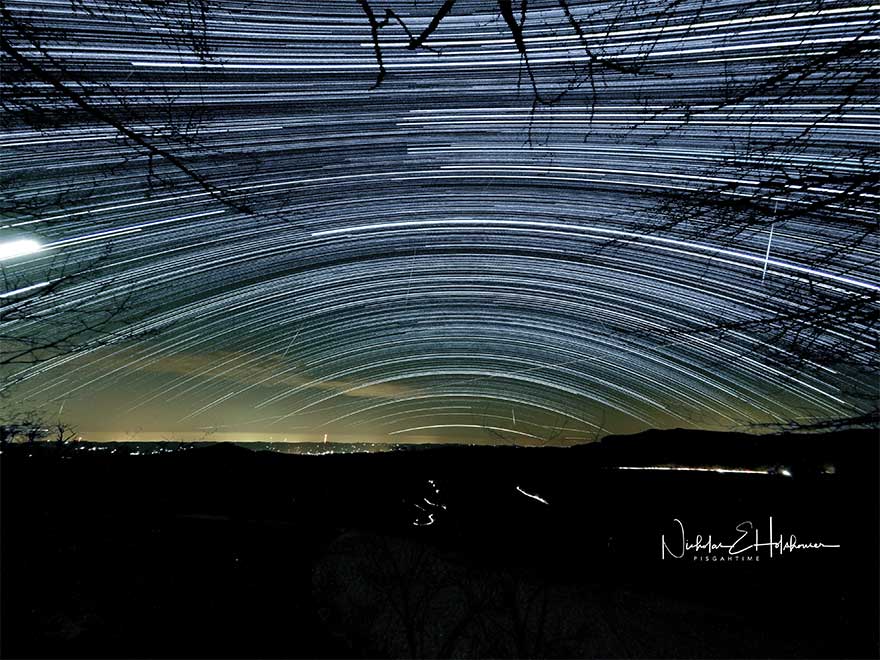CamDo customer Nicholas Holshouser (you might remember him from his gorgeous time lapse we posted about last year) recently used Blink to capture a meteor shower on Blue Ridge Parkway. He used it conjunction with our customer HERO4 firmware and associated CSI script to capture multiple photos over the course of many hours in NightLapse mode.
“I am a huge astro-photography nut. Normally star and meteor pictures are taken with full-frame DSLRs and of course it requires actually being there, often in rather cold weather. I also love to take photos up on the nearby Blue Ridge Parkway, and at night you have huge vistas and reasonably dark skies. It’s a perfect place for meteor showers.”
CamDo Applications Engineer Yarin helped Nick develop the following script:
# NIGHT #
# 12:05 AM - 06:00
# 5 hours 55 minutes, 355 minutes
# ( 355 x 60 = 21300)
# multiNightLapse
mode multiNightLapse
setting MultiNightShutterDuration 30
setting MultiNightlapseRate Continuous
sleep 10
shutter press
sleep 21240
shutter stop
# sleep long enough for last picture to complete
sleep 50
That’s a 30 second exposure, at 800 ISO, continuously for almost 6 hours after which you’ve got 720 images. With HERO4 you only get JPG, but he'd love to be able to do this with HERO5 in order to get RAW images (but it isn’t possible currently).
The individual pictures are just the images which had meteors in them.

He then created a star trail image (featured at the beginning of this post) made by stacking all the images in Photoshop - i.e. it puts every image into the one image. A cool side-effect of stacking is that all the noise is cancelled out so even a pretty noisy image ends up making a very clean image after processing. In his case, the camera is facing almost due south so you get the cool symmetrical arch effect (which he notes was just luck).
With the CSI scripting he is also able to get nice sunrise/sunset time lapses. Below is an example of this, taken a few days after the meteor shower using the same camera, but different part of the script. He has the script start the camera after midnight and change modes throughout the day before finally shutting off before midnight. The whole cycle repeats the next day. His intention is to eventually use this method for specific purposes like after a snow storm, a meteor shower, etc.
About Nick Holshouser:
By day, Nick is a Software Engineer working for SAP Labs, LLC. Outside of work and outside in general he’s an avid woodsman, amateur naturalist, and aspiring photographer/filmmaker. He spends as much time as possible in the woods, camera in hand. He’s constantly working to improve his photography skills over the last several years and is hooked on time lapse & remote nature photography. Follow him on Facebook & Vimeo.



